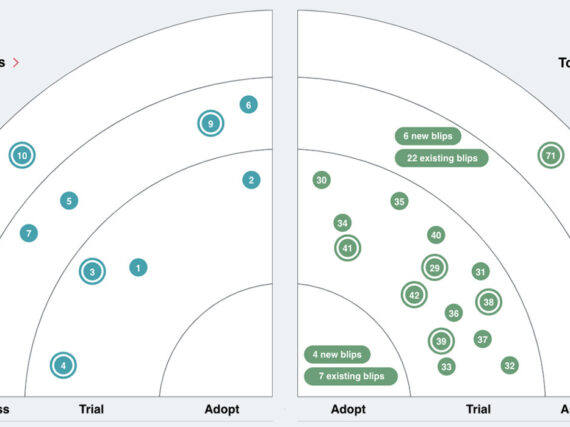A park visitor, Sarah, needs to find out which public parks have wheelchair accessible facilities for a family outing. Navigating the government website, she struggles to find the information. The search bar returns low quality results, and the menus are complex and difficult to navigate. Frustrated, she wishes there were a more intuitive way to get the information she needs.
Enter conversational search assistants — a game changer for people like Sarah who seek quick, accurate answers without the hassle. Conversational search can transform the traditional search experience by allowing users to ask questions naturally (also known as natural language processing), just as they would with a real person.
Rather than relying on precise keywords, Sarah can simply ask, “Which parks have wheelchair accessible facilities?” and receive accurate results, even if the actual term listed is “ADA compliant facilities.” This is made possible through a technology known as “semantic search,” which ensures that related terms are recognized as equivalent, thereby enhancing the search experience.
Addressing common pain points
Traditional government websites often rely on hierarchical menus, which can be cumbersome and time-consuming. Users like Sarah may have to click through multiple layers of menus to find the right section, only to discover that it doesn’t contain the needed information. Analytics show that visitors that encounter obstacles often give up before finding the content they seek.
AI Lab update on the benefits, risks, and emergent guidelines for LLMs in the public sector
Large Language Model Applications for Government
Keyword search can also create friction. Sarah must figure out what words are used in the content she seeks which can require a lot of trial and error. For example, if parks are tagged with whether or not they are “ADA compliant”, searching for wheelchair accessible parks will get no results. Especially on government sites that use a lot of domain specific language, this can be very problematic and hinder findability of content via search.
Conversational search assistants eliminate both of these frustrations by allowing users to bypass them. Instead of wading through menus, or guessing at search terms, users can simply ask their question and receive an immediate, relevant response.
Conversational search isn’t just a convenience—it’s a powerful tool for enhancing the user experience on government websites. For citizens like Sarah, it means finding information quickly and easily, without frustration. For government agencies, it translates to greater efficiency, with routine inquiries handled automatically, freeing up staff to focus on more complex tasks.
The 24/7 availability of these assistants ensures that citizens can get the help they need, even outside of regular business hours. Additionally, the natural language interface makes government websites more accessible to people with disabilities or those less comfortable with traditional navigation methods.
Real-life applications
The use cases for conversational search are vast. It’s important to start with good content architecture and a content-first mindset. Effective use of conversational assistants requires careful consideration of how content is created and structured. Well optimized content also helps ensure that your audiences can find your content via organic search, such as Google, as well as through the search tools (such as Solr) on a website.
A good place to get started on a government website is to host a knowledge base—a repository of common questions and answers. With conversational search, citizens can ask questions directly, such as “How do I apply for a building permit?” and receive detailed instructions without needing to search through multiple pages.
To cite a GovWebworks client example, on one of our state courts websites, you will soon be able to ask a question such as, “Who is the state court administrator?” and get back an answer like, “The state court administrator is [NAME]. He can be reached at: [EMAIL] or [PHONE].”
Similarly, for websites hosting large collections of documents like PDFs, users can quickly locate specific information. For instance, a query like, “Show me all arrest warrants for Davis County in January 2022” would return precise results, saving users from the tedious task of manually searching through documents.
Beyond basic search
Conversational search assistants are not just for finding information—they can also perform complex tasks. When dealing with large amounts of content, government sites can use conversational assistants for the following tasks:
- Summarization: They can summarize long documents, making it easier for users to grasp key points without reading through the entire text.
- Classification: They can classify documents into categories, enabling more organized content management.
- Named Entity Recognition: By identifying entities like names, dates, and locations within texts, these assistants allow users to filter and analyze information based on specific criteria.
Furthermore, conversational assistants can provide the following services:
- Language Translation: For multilingual visitors, conversational assistants can translate responses into the preferred language, ensuring accessibility for a broader audience.
- Brand and Tone Alignment: Moreover, these assistants can align content with a specific brand tone or reading level, enhancing communication consistency.
- Hand-Off and Escalation: When a user’s query doesn’t yield the desired results, the assistant can escalate the issue to a live support representative, complete with a transcript of the conversation to ensure seamless hand-off.
Additional benefits
Hybrid conversational assistants combine the flexibility of conversational interfaces with the precision of intent-driven interactions. For instance, if Sarah starts a query with “I need information on…” the assistant might offer options like “parks,” “permits,” or “events” to guide her in the right direction. This blend of conversation and predefined choices ensures that users can easily find what they need while maintaining a natural flow of interaction.
One of the often-overlooked benefits of conversational search is the wealth of data it generates. By analyzing the questions users ask and the responses they receive, government agencies can gain valuable insights into what citizens need and where there may be gaps in available information. This data can drive continuous improvements, making government services more responsive and user-centric.
In summary
In a world where user expectations are rapidly evolving, conversational search assistants represent a significant leap forward. They not only streamline the search process but also provide valuable insights that can help government agencies better serve their citizens.
Incorporating semantic search, natural language, and where appropriate, generative search, into websites can improve the findability of content, the overall user experience, and future-proof websites as audiences continue to expect enhanced search assistants.
Sarah’s search for parks with wheelchair accessible facilities is just the beginning. As these technologies continue to evolve, the possibilities for improving citizen engagement and satisfaction have yet to be imagined.
Learn more
- Find out more about using AI to optimize your organization’s digital goals
- Sign up for the AI Newsletter for a roundup of the latest AI-related articles and news delivered to your inbox
- See archive of AI news
- Contact us about adding conversational search to your site.








